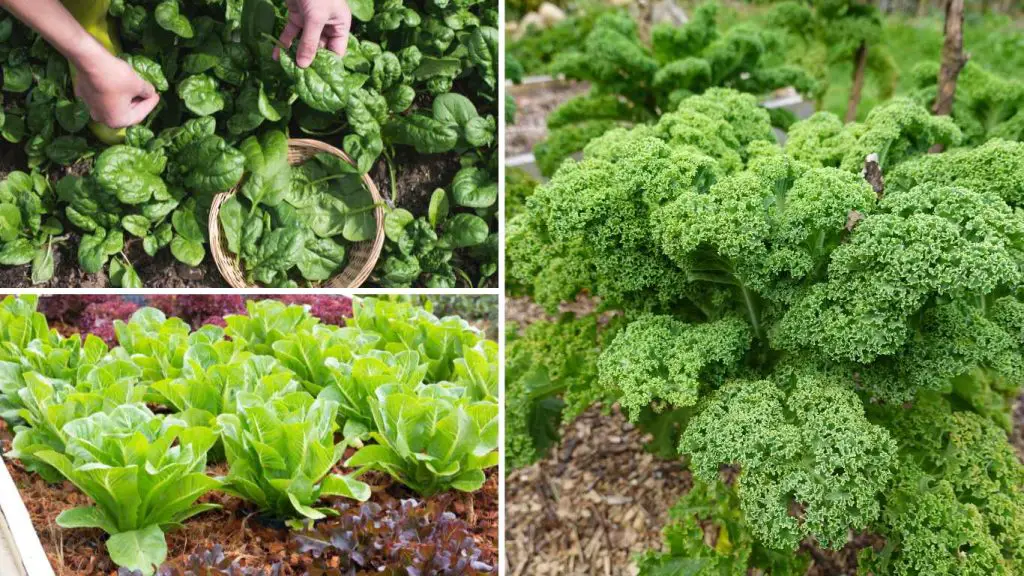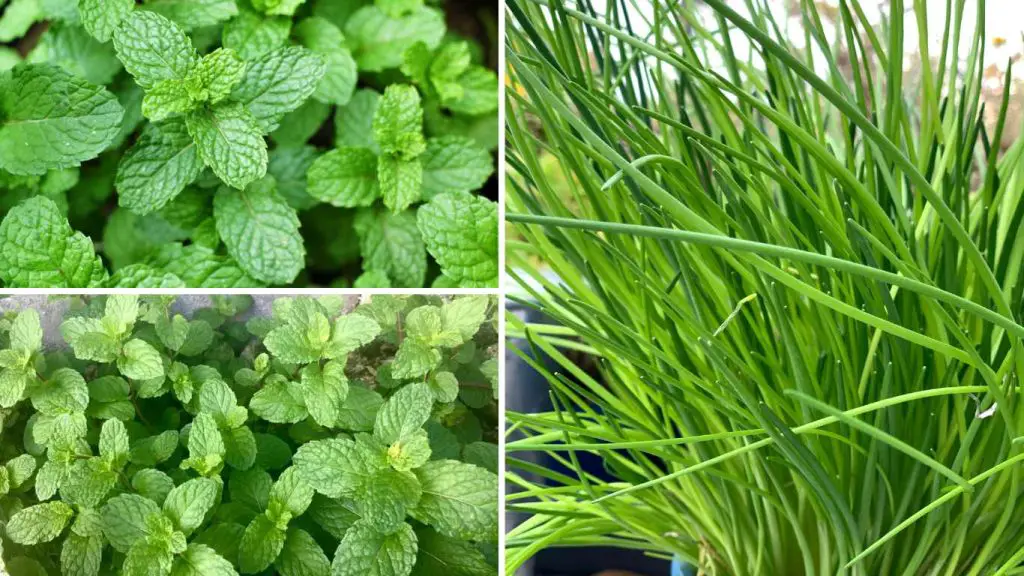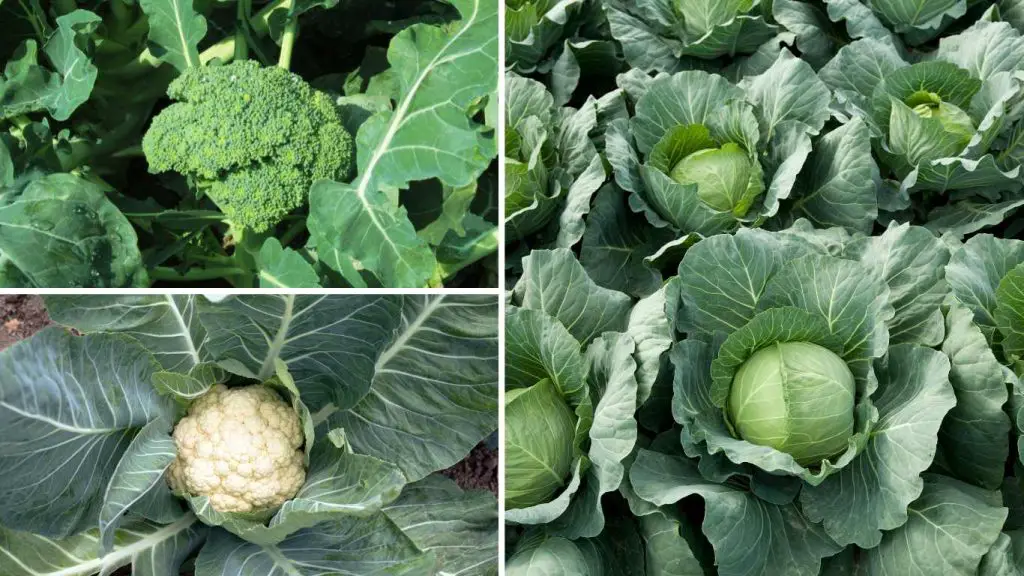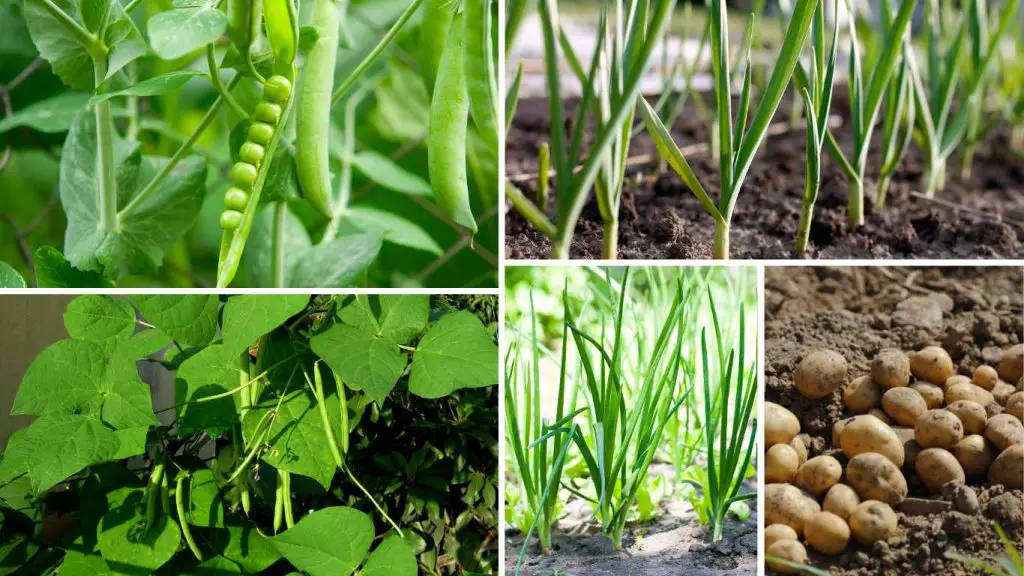Because they thrive in areas with less sunlight, shade-tolerant vegetables increase gardening options and space utilization. Unlike traditional vegetables that require full sun to thrive, they offer a greater variety of fresh produce, boost productivity, and make the most use of the available space.

Vegetables that can withstand partial shade increase gardening options and let gardeners harvest and use more space in these areas. They provide an alternative to shade-producing structures, allowing for successful cultivation and the best possible yield.
Shade Gardening
The practice of cultivating plants in regions with little sunlight—often impacted by structures like buildings or trees—is known as shade gardening.
The Value Of Choosing Veggies That Can Withstand Shadow
To successfully harvest vegetables in places with little sunlight, choose varieties that can withstand shadows.
Shade-tolerant vegetables do well in low-light conditions, offering a greater range of crops and gardening opportunities. These vegetables are very versatile and adaptive, making them nutrient-dense and perfect for home gardens.
To maximize garden productivity, especially in areas with limited sunlight, choosing vegetables that can withstand shade is essential for ensuring plentiful harvests and optimizing growing space.
Leafy Greens

1: Spinach
As a leafy green vegetable that grows well in partial shade, spinach is a great option for gardens that receive some shade.
Although it is best in full sun, spinach can also grow in partial shade, which makes it a useful plant for gardens with little light.
Because spinach has a short growing season (4-6 weeks after planting), it can grow quickly and absorb sunlight in partially shaded areas.
Lower temperatures, between 45°F and 75°F, are ideal for spinach growth. This helps to delay seeding and prolong the harvest season in areas with partial shade.
As a versatile vegetable that originated in the wild beneath forest canopies, spinach can withstand some shade.
Because of its adaptability, rapid growth, and abundance of culinary applications, spinach is a great plant for gardens with partial shade because it produces a consistent supply of fresh spinach even in places with little sunlight.
2: Lettuce
Because it can retain a healthy growth rate and absorb sunlight, lettuce is a vegetable that grows well in shaded environments.
Because it is grown primarily for its leaves rather than for fruit or roots, leafy lettuce is more tolerant of shaded conditions and little direct sunlight.
Because of its shallow root system, lettuce can grow in pots or in less fertile soil because it can get water and nutrients without penetrating deeply into the ground.
Lettuce grow best in partial shade, which protects them from direct sunlight and keeps them from burning or withering during the hottest parts of the day. This lowers the chance of sunburn.
3: Kale
Although it is generally preferred to be in full sun, kale is a versatile plant that can also grow well in partial shade.
Partially shaded plants, like kale, do well, especially in the warmer months. Like lettuce, kale prefers cooler weather, and some shade can help moderate these temperatures, which will promote kale growth.
Partial shade is important because direct sunlight can damage kale leaves. Its versatility in cultivation allows it to grow in a variety of settings, such as raised beds, containers, or the ground directly.
Root Vegetables

4: Radishes
Though they’re frequently thought of as sun-loving vegetables, radishes can, in the right circumstances, flourish in partial shade.
They can be harvested in areas that are partially shaded because they mature in 3–4 weeks after planting.
Radish growth is facilitated by partial shade during warmer months or hot summers because they like cooler temperatures and can bolt early in response to heat stress.
Because of their shallow root system, radishes can grow well in pots or in less fertile soil. Additionally, they gain from partial shade because it holds on to moisture better than direct sunlight, which is essential for the growth of plants and bulbs. This lessens the chance that the soil will dry out too quickly, which keeps radishes from getting woody or pithy.
Planting radishes continuously guarantees a consistent flow of fresh produce, even in areas with shade where maturity takes longer.
5: Beets
Because they are able to absorb sunlight, beets are a great plant for gardeners who have limited sunlight because they grow well in partial shade.
Although they don’t produce as much as they would in full sun, beets are a cool-season crop that can flourish in some shade. Their preference for colder climates may be advantageous to their development.
Additionally, shaded areas hold moisture better, guaranteeing that the beets get the moisture they need for healthy growth.
Beet plants can access more nutrients and resources because they have longer growing seasons and less competition in shaded areas.
Beets are shade-loving plants that need 4–6 hours of sunlight per day to grow to their full potential. They also need healthy soil, enough moisture, and proper maintenance
Herbs

6: Mint
Mint is one of the few herbs that likes shaded spots and grows well in partial to full shade.
Mint grows best in natural environments that receive partial shade or dappled sunlight. It does best in shaded areas where the soil is moist. Mint is stressed by direct sunlight; it stays cooler and is less likely to scorch or wilt in partial shade.
Planting mint in areas with shade helps inhibit bolting and slow down its rapid growth, so you can enjoy the leaves for longer. In areas with shade, its growth is usually more controlled, which inhibits aggressive spread and preserves its leaves.
Mint grows best in partial shade or dappled sunlight, and if possible, plant it in containers to slow down its underground rhizome-driven rapid spread.
7: Chives
Though they prefer full sun, chives are a versatile herb that can grow in partial shade, which makes them ideal for shady garden areas.
Gardeners can choose to grow chives in either full sun or partial shade because they are a versatile plant. Because of their ability to withstand lower light levels, they can grow more fruitfully.
Since shaded areas hold moisture better than full sun, chives do best in cooler temperatures. While partial shade can help moderate temperatures and prevent wilting or bolting in hot climates, this also helps prevent soil from drying out too quickly and offers protection from the heat.
In hot summer climates, planting chives in partial shade will lengthen the growing season by creating a cooler environment that will allow for a longer harvest before seeding.
Cruciferous Vegetables

8: Broccoli
While it can tolerate some shade, broccoli grows best in full sun and prefers sunny conditions for maximum development and yield.
Mild temperatures are ideal for broccoli growth, and full sun exposure encourages robust development, whereas shaded areas may cause plants to mature more slowly.
Due to their ability to compete with plants for nutrients, water, and space, weeds in shaded areas can hinder the growth of broccoli plants by shading them out and limiting their access to sunlight.
Although broccoli plants prefer full sun, they can be shielded from extreme heat stress in the summer by using shade cloth or afternoon shade.
9: Cauliflower
Similar to broccoli, cauliflower grows best in full sun, though it can tolerate some shade, so shade is not as conducive to its growth.
Inadequate sunshine can impede the process of photosynthesis, which is how cauliflower plants convert light energy into chemical energy for growth and development.
For cauliflower heads to form, they need plenty of sunshine; otherwise, their growth may be impeded. While it does well in full sun, cauliflower can be shielded from extreme heat stress in hot summer months by using shade cloth or afternoon shade.
10: Cabbage
A vegetable of the cool season, cabbage grows best in full sun, but it can tolerate some shade as well.
As a cool-season vegetable, cabbage prefers cooler weather, especially in shaded areas where the temperature is marginally lower than in full sun in warmer climates.
Cool-season crops such as cabbage benefit from improved moisture retention in shaded areas, which guarantees that the plants get the moisture they require for healthy growth and development.
Cabbage plants benefit from partial shade in hot weather and heatwaves because it keeps them cooler and protects them from wilting and bolting. Additionally, it prolongs the growing season, enabling later harvest times.
While it can tolerate shadow, cabbage needs four to six hours of sunlight each day. Successful cultivation requires proper care, well-draining soil, and sufficient moisture, even in the absence of sunlight.
Legumes

11: Peas
Due to their semi-tolerant nature, which enables them to flourish in conditions with partial shade, peas are perfect for shade gardening.
Peas need four to six hours of sunlight per day and grow best in partial shade. They like it colder, and shade keeps the earth from overheating in the summer by balancing the temperature.
Longer harvest seasons are achieved by the gradual maturation of peas in partially shaded areas. Shade-tolerant cultivars such as climbing and bush peas enable gardeners to select cultivars that are more appropriate for their particular circumstances.
12: Green Beans
Another vegetable that can flourish in conditions of partial shade are green beans, sometimes referred to as snap beans or string beans. This is the reason they thrive:
Green beans, a cool-season vegetable, can tolerate partial shade for optimal growth and productivity. They require 4-6 hours of sunlight per day, and partial shade helps moderate temperatures during warmer months.
Green beans are a great option for gardeners with limited sunlight because they are versatile plants that can yield a large harvest in partial shade.
13: Garlic
Like green beans, garlic is a bulbous plant in the Allium family that can tolerate some shade and flourish in certain environments.
Even in hot summer climates, garlic grows well in partial shade because it shields plants from extreme heat stress and promotes healthy growth.
Cooler weather and some shade are ideal for garlic growth because they help the soil stay moist and moderate temperature—two factors that are critical for bulb formation. This keeps the soil from drying out too quickly—much like green beans do.
14: Green onions
Green onions, sometimes called spring onions or scallions, are hardy vegetables that grow best in partial shade because of their adaptability to different climates.
Due to their short growth cycle of sixty days and ability to tolerate partial shade, green onions can make effective use of the sunlight that is available in shaded environments.
Green onions can be shielded from intense heat and sunlight by partial shade, which also prevents soil stress and drying out, hence lowering the chance of premature bolting.
Compact and space-efficient, green onions are perfect for containers or shaded garden beds. They can be grown in places with limited sunlight or space because they only need to be watered and occasionally fertilized.
15: Potatoes
For best growth, potatoes need full sun and well-drained soil, but if the soil is both well-drained and well-lit, some partial shade may be helpful.
Partial shade can cause potatoes to produce less because it blocks sunlight, which prevents photosynthesis and slows down the growth of tubers and foliage. It can also cause potatoes to grow more slowly.
Select early-maturing potato varieties, keep an eye on the moisture content of the soil, and add extra light with grow lights or reflective surfaces to lessen the effects of partial shade on your plants.
By taking these precautions, potatoes are guaranteed to receive enough moisture for tuber development and a respectable harvest.
Although they can grow in some partial shade, potatoes should be planted in a spot that receives plenty of sunlight all day long for the best results and yields.
